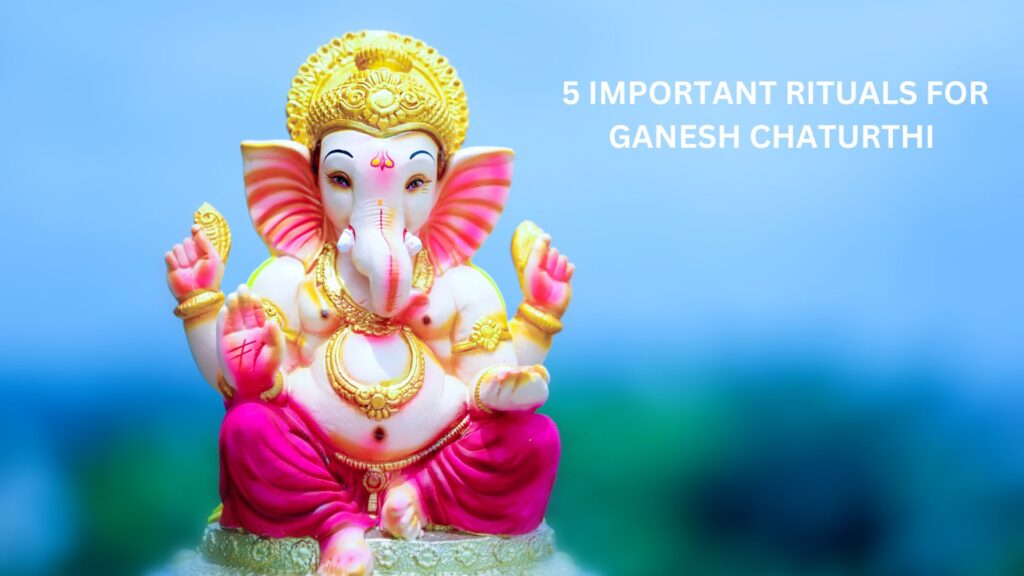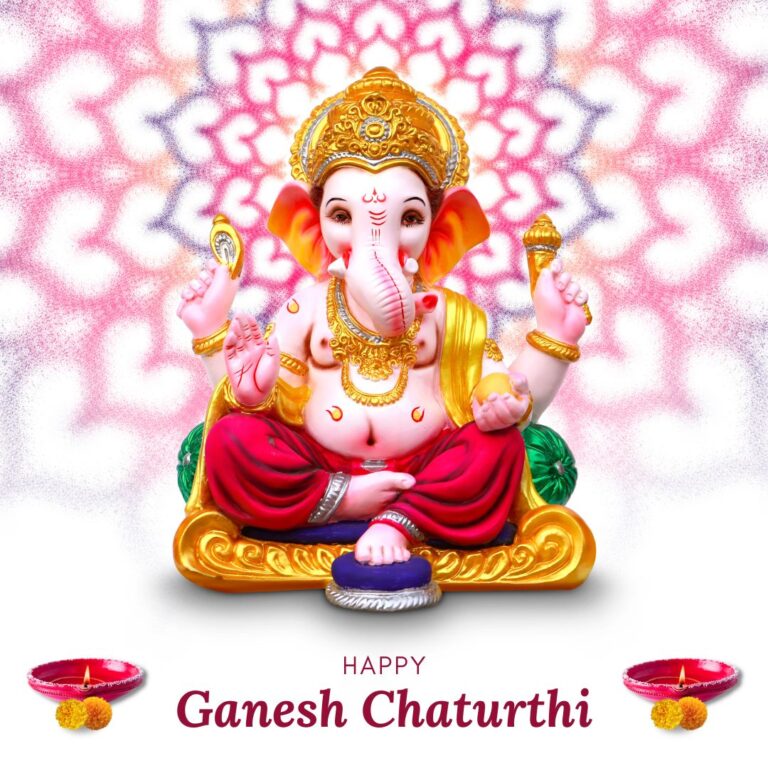
5 Important Rituals of Ganesh Chaturthi
Ganesh Chaturthi, also known as Vinayaka Chaturthi, is one of the most significant festivals in the Hindu calendar. Celebrated with immense devotion and grandeur across India, particularly in Maharashtra, Ganesh Chaturthi marks the birth of Lord Ganesha, the elephant-headed god of wisdom, prosperity, and new beginnings. The festival typically lasts for ten days, starting on the fourth day of the Hindu month of Bhadrapada. During this period, devotees perform various rituals to honor and celebrate Lord Ganesha. Here are five important rituals of Ganesh Chaturthi that are integral to the festivities.
1. Ganesh Sthapana
The festival begins with Ganesh Sthapana, the installation of Lord Ganesha’s idol. This is a sacred and joyous event, often marked by vibrant processions, music, and dancing. Here’s how the ritual unfolds:
- Preparation of the Space: Before bringing the idol home, devotees thoroughly clean the house or the designated pooja area. A decorated platform or pedestal is prepared with flowers, rangoli (colorful patterns made with powders), and other decorations.
- Welcoming Lord Ganesha: The idol, usually made of clay, is brought home with chants of “Ganpati Bappa Morya” and placed on the prepared platform. This act symbolizes inviting Lord Ganesha into the home to bless the family with wisdom and remove obstacles.
- Pran Pratishtha (Invoking the Deity): This is a vital part of the installation ceremony, where a priest or the head of the household performs a ritual to invoke the divine presence into the idol. This is done by chanting mantras and offering flowers, rice, and sandalwood paste.
2. Pooja and Aarti
Once the idol is installed, the daily pooja and aarti become the center of the festivities. These rituals are performed every morning and evening during the ten-day festival.
- Morning Pooja: Devotees begin the day with a morning pooja, where the idol is bathed with Panchamrit (a mixture of milk, curd, honey, ghee, and sugar) and water. After the Abhishekam (bathing), the idol is adorned with fresh flowers, garlands, and a tilak (mark on the forehead made with vermillion and sandalwood paste).
- Offering of Naivedya: This involves offering a variety of foods to Lord Ganesha, including his favorite sweet, modak, along with other sweets, fruits, and coconut. The food is placed in front of the idol as a symbol of gratitude and devotion.
- Aarti: The aarti is a devotional song sung in praise of Lord Ganesha, accompanied by the waving of lamps or camphor in front of the idol. This ritual is performed with great enthusiasm, often with clapping, ringing of bells, and blowing of conch shells. The aarti is a way to invoke the blessings of Lord Ganesha and to express reverence and devotion.

3. Ganesh Visarjan (Immersion of the Idol)
Ganesh Visarjan marks the conclusion of the Ganesh Chaturthi festival. It involves the immersion of the idol in a water body, signifying the departure of Lord Ganesha to his heavenly abode, taking away with him the misfortunes of his devotees.
- Preparation for Visarjan: On the final day, the idol is taken out in a grand procession with music, dance, and chants of “Ganpati Bappa Morya, Pudhachya Varshi Lavkar Ya” (O Lord Ganesha, return soon next year).
- Immersion Ceremony: The idol is immersed in a river, sea, or lake, symbolizing the cycle of creation and dissolution in nature. This ritual teaches devotees the importance of detachment and reminds them that life is transient.
- Eco-Friendly Practices: In recent years, there has been a growing emphasis on eco-friendly Visarjan practices. Many devotees opt for clay idols that dissolve easily in water without harming the environment. Some also perform the immersion in artificial tanks to reduce pollution in natural water bodies.
4. Recitation of Ganesh Atharvashirsha
The Ganesh Atharvashirsha is a Vedic hymn dedicated to Lord Ganesha. It is recited during Ganesh Chaturthi to seek his blessings and protection.
- Importance of the Recitation: The hymn is believed to have powerful spiritual benefits and is said to bestow wisdom, prosperity, and protection upon the devotee. Reciting it with devotion can help remove obstacles and bring success in endeavors.
- When and How It Is Recited: The Ganesh Atharvashirsha can be recited during the daily pooja or aarti. Some devotees also recite it multiple times throughout the day, especially during the first day of the festival and on the day of Visarjan.
5. Modak Offering (Naivedya of Modak)
Modak is a sweet dumpling that is believed to be Lord Ganesha’s favorite food. Offering modaks is an essential ritual during Ganesh Chaturthi, as it is considered highly auspicious.
- Symbolism of Modak: The modak symbolizes spiritual knowledge and the ultimate reward of devotion. Its shape is said to represent the human brain, and the sweet filling inside signifies the bliss of wisdom.
- Variety of Modaks: There are various types of modaks, including steamed (Ukadiche Modak), fried, and even chocolate-flavored ones. Devotees prepare these modaks with great love and offer them to Lord Ganesha as part of the naivedya.
- Distribution of Prasad: After offering the modaks to the deity, they are distributed as prasad (consecrated food) among family members and friends. Sharing prasad is a way of spreading the blessings of Lord Ganesha and fostering a sense of community and togetherness.
Conclusion
Ganesh Chaturthi is a festival that embodies devotion, celebration, and cultural heritage. The rituals performed during this festival not only honor Lord Ganesha but also reinforce the values of humility, unity, and environmental consciousness. By understanding and participating in these rituals, devotees can deepen their connection with the divine and imbibe the wisdom and blessings of Lord Ganesha in their lives. Whether it’s the meticulous preparation for Ganesh Sthapana, the joyous pooja and aarti, or the poignant farewell during Ganesh Visarjan, each ritual holds a special significance that enriches the spiritual journey of the devotees.
